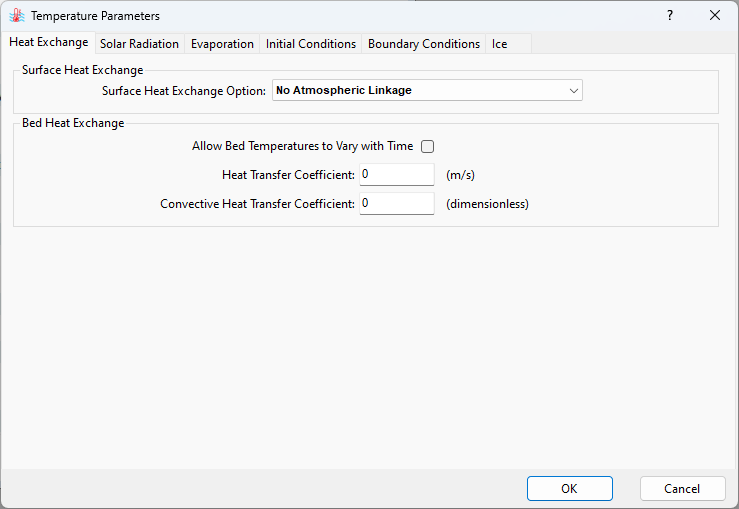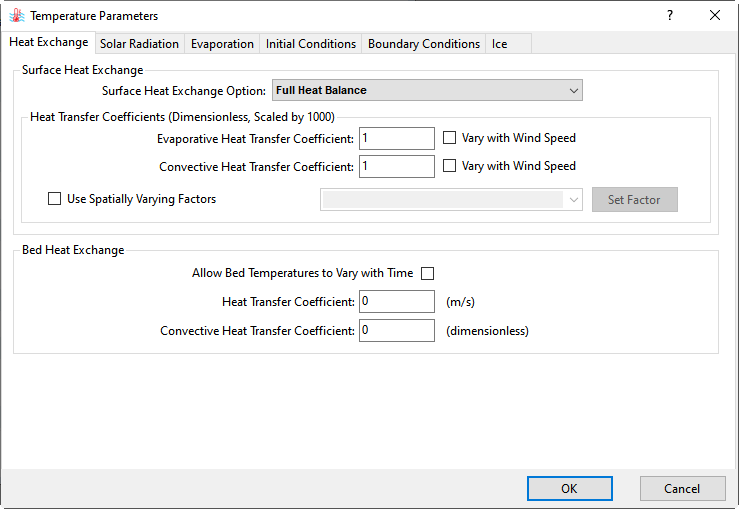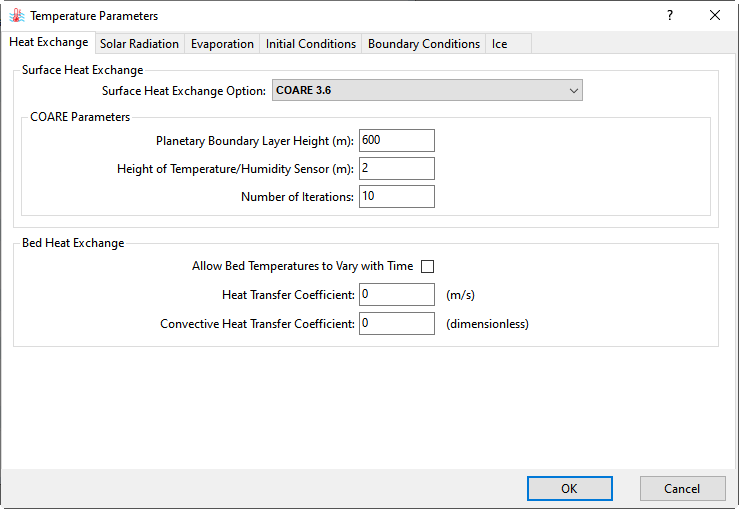The Heat Exchange tab is where the user sets the Surface Heat Exchange model and Bed Heat Exchange parameters as shown in Figure 1. Settings that are relevant to surface heat exchange are provided in the Surface Heat Exchange frame with sub-divisional parameter settings that are additional depending on which model is selected. There are five models for the simulation of Surface Heat Exchange process as below.
- No Atmospheric Linkage
- Full Heat Balance
- COARE3.6
- Equilibrium Temp (CE-QUAL-W2 Method)
- External Equilibrium Temperature
If the Full Heat Balance or COARE3.6 model is used, the user needs to specify the Heat Transfer Coefficients (Figure 2) and COARE parameters (Figure 3), respectively, while other models require no further specifications. A technical blog analyzing the performance of COARE 3.6 in comparison with the equivalent models has been published by DSI.
Figure 1. Temperature Parameters - Heat Exchange tab.
The bed heat exchange configuration can be assessed under the Bed Heat Exchange option. The user can set to allow temporal variation of bed temperatures by checking the box. The Heat Transfer Coefficient larger than 0 enables the heat flux between water and the sediment bed. Attention should be given to the unit conversion of this coefficient from W/m2/°C to m/s. If the entry is larger than 1E-05 m/s, which is outside the conventional range, EE checks and corrects by multiplying it with 2.39E-07. The Convective Heat Transfer Coefficient is dimensionless and used to simulate the heat exchange at the sediment bed with the presence of solar radiation.
Figure 2. Surface Heat Exchange - Full Heat Balance.
Figure 3. Surface Heat Exchange - COARE 3.6.


